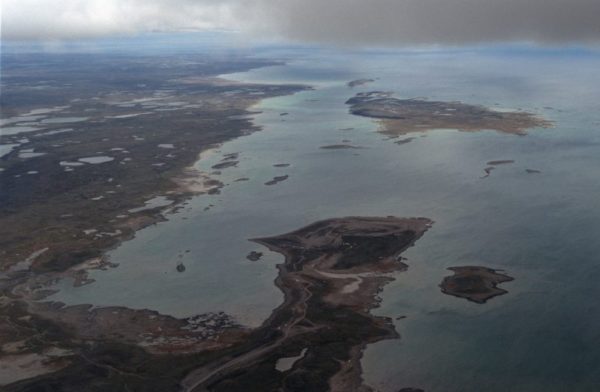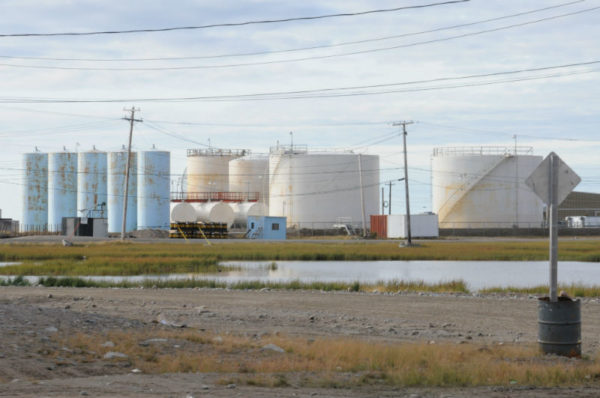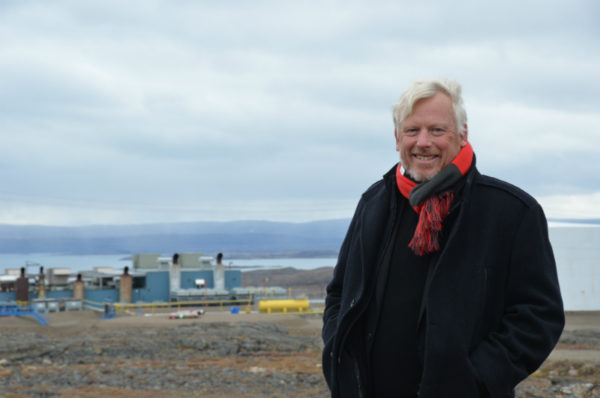‘Historic moment for Nunavut’ at renewable energy summit
Towering willow trees growing north of the tree line. Killer whales in bays that were previously inaccessible because of ice. Cranes and other birds never seen so far north.
Inuit leaders shared their first-hand experiences of the changing climate in conversations and working sessions at the just-completed Arctic Renewable Energy Summit in Iqaluit, after travelling from Sanikiluaq (56.5° N), Rankin Inlet (62.8° N), Hall Beach (68.8° N) and other remote communities, to be heard by Indigenous and Northern Affairs Canada, Environment and Climate Change Canada, and their own Nunavut territorial government.
They wanted a voice at the table. So we brought the table more than 2,000 kilometres north to them.
The summit – organized by WWF-Canada and co-hosted by the federal and Nunavut governments and the Qulliq Energy Corporation (the government-run electricity utility for Nunavut) – was designed to explore the challenges and opportunities involved with habitat-friendly renewable energy development in the North. The goal: to take a major step toward reducing Arctic communities’ dependence on diesel for economic, human health and environmental reasons. Less diesel means lower carbon emissions (which are high per capita in Nunavut), less risk of a spill in communities not equipped to clean up, and less soot pollution (which lands on snow and ice, attracts the sun and accelerates melting, as well as erodes air quality in what should be a pristine environment).
Government representatives and community leaders joined dozens of policy, utility and legal experts in one room for the first time to talk about the realities of weaning Arctic communities off dirty diesel fuel, and onto habitat-friendly renewable energy.
We learned from Gwen Holdmann, director of the Alaska Center for Energy and Power, that 70 of about 200 remote communities in her state are already relying heavily on renewable energy as their main source of power. We learned from William Thomson, manager of operations for the Alaska Village Electric Cooperative, about the mistakes they made and the challenges they faced on the road to success.
From Russian researcher Mariia Iakovleva we discovered that remote Siberian communities are already depending on clean energy for power. And Tuqliq Energy Co. president Laurent Abbatiello shared a Canadian success story: His company created the wind-power system that Raglan Mine in Nunavik, owned by Glencore, depends on to keep the mine in business.
Reliability is clearly no longer an issue.
Neither is cost. The Waterloo Institute for Sustainable Energy shared the latest findings of research commissioned by WWF-Canada. The institute found that significant cost savings come from using renewable energy generation to minimize the use of aging diesel-powered generators.
With stories of success, the foundation for a solid business case, direction on policy changes, community input, and key components for a doable Canadian community-scale clean energy solution, the momentum toward renewables and excitement for innovation is growing.
In a passionate speech, Nunavut Minister of Energy and Environment Joe Savikataaq announced his government’s commitment to creating a territorial Climate Change Secretariat. WWF-Canada announced the launch of a fund for habitat-friendly renewable energy training for Arctic communities, to drive local expertise and economic development, starting with $25,000 and inviting others to donate. Hours later, an anonymous donor had given another $5,000.
The Qulliq Energy Corporation announced it will launch a net metering program in the spring of 2017, opening the door to energy sources other than diesel by allowing renewable energy to be added to the grid. It may seem like a small step – but the significance can’t be understated. With Nunavut facing major decisions about its aging, decrepit diesel infrastructure, the timing couldn’t be better. Nunavut has to invest in energy for future generations – and the choice is clear.
As Canada’s Minister for Indigenous and Northern Affairs Carolyn Bennett wrote in her letter of support for the summit, “Budget 2016 proposed $10.7 million over two years to implement renewable energy projects in off-grid Indigenous and northern communities that rely on diesel and other fossil fuels to generate heat and power. The Prime Minister and the President of the United States also committed recently to develop a plan, with partners, for deploying innovative renewable energy and efficiency alternatives to diesel and advance community climate change adaptation.”
Following the summit, we are in discussions geared toward forming a renewable energy partnership to expedite the deployment of habitat-friendly renewable energy in remote northern communities.
As one elder said, this summit marked “a historic moment for Nunavut.”
Now we’ll build on that momentum, and with our government partners and community leaders, together write a new, cleaner chapter in the territory’s history.




